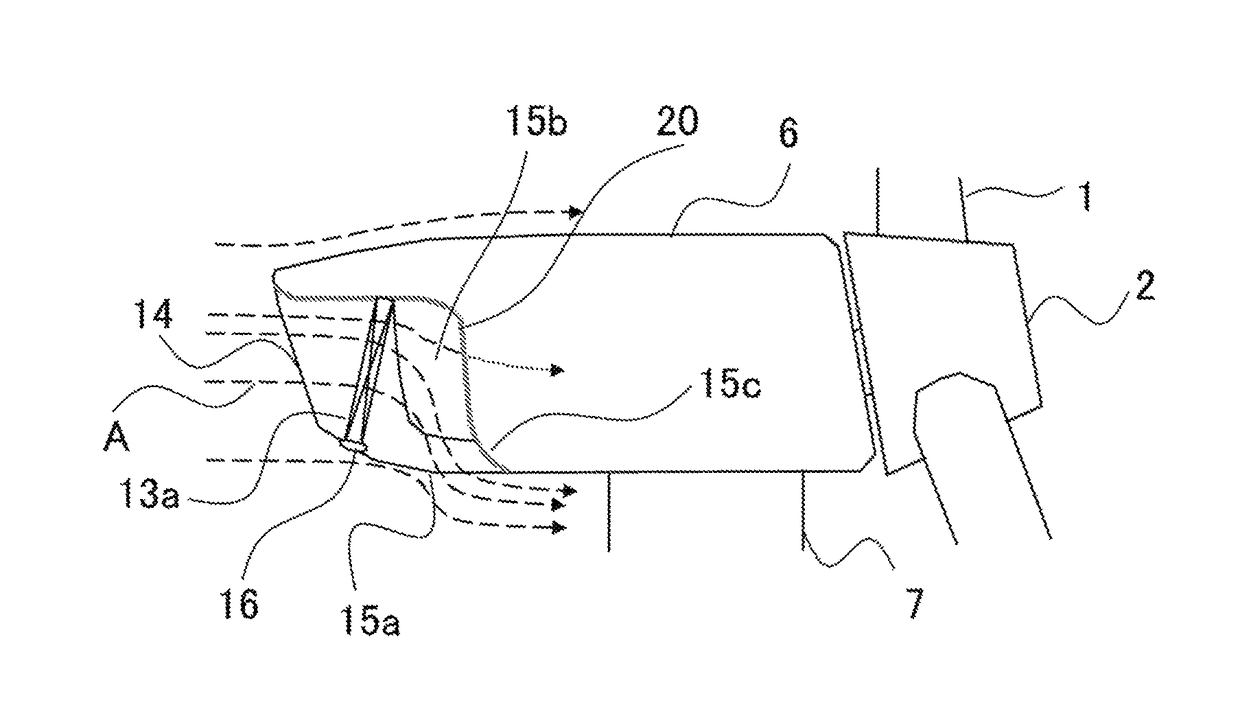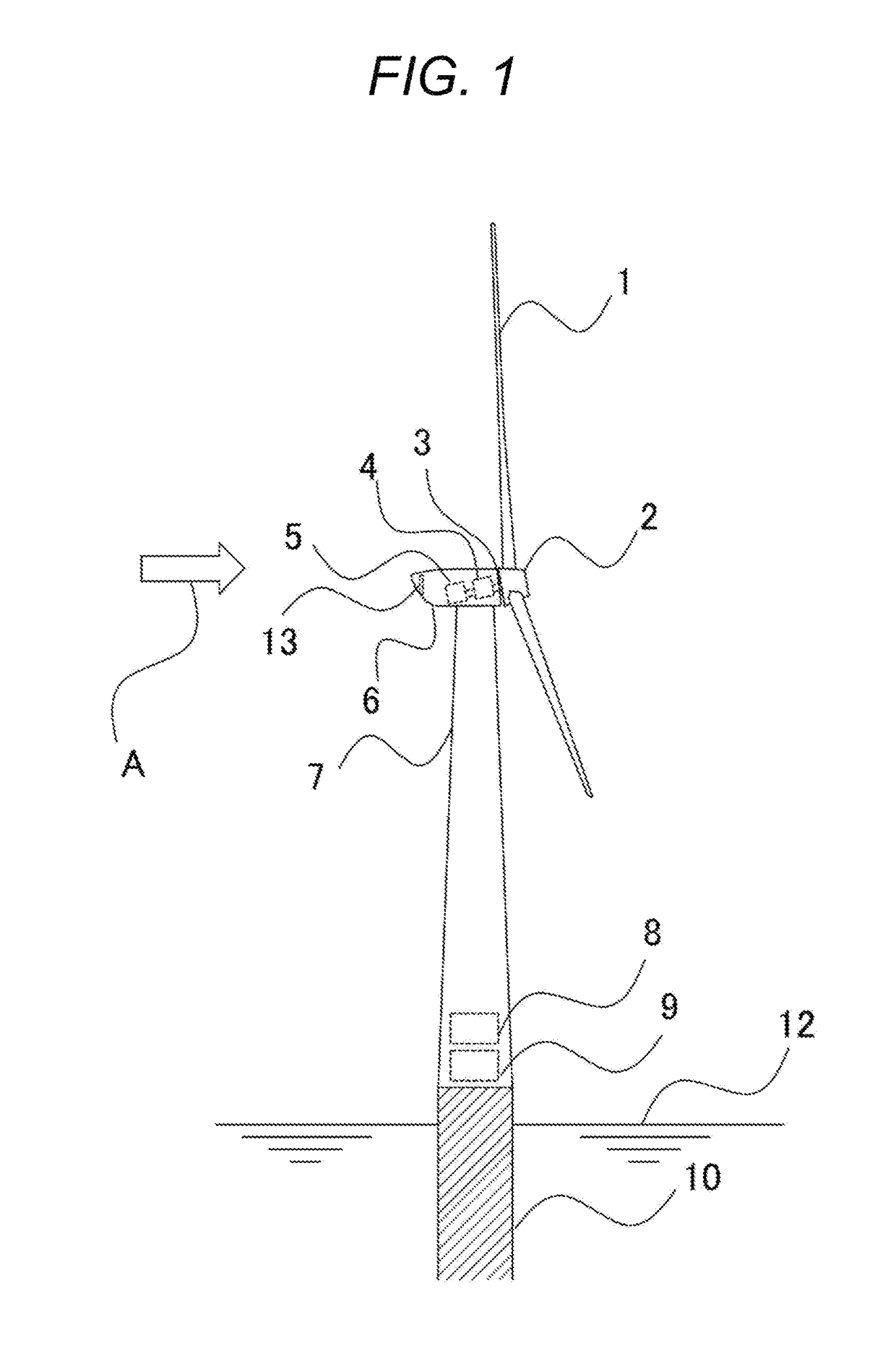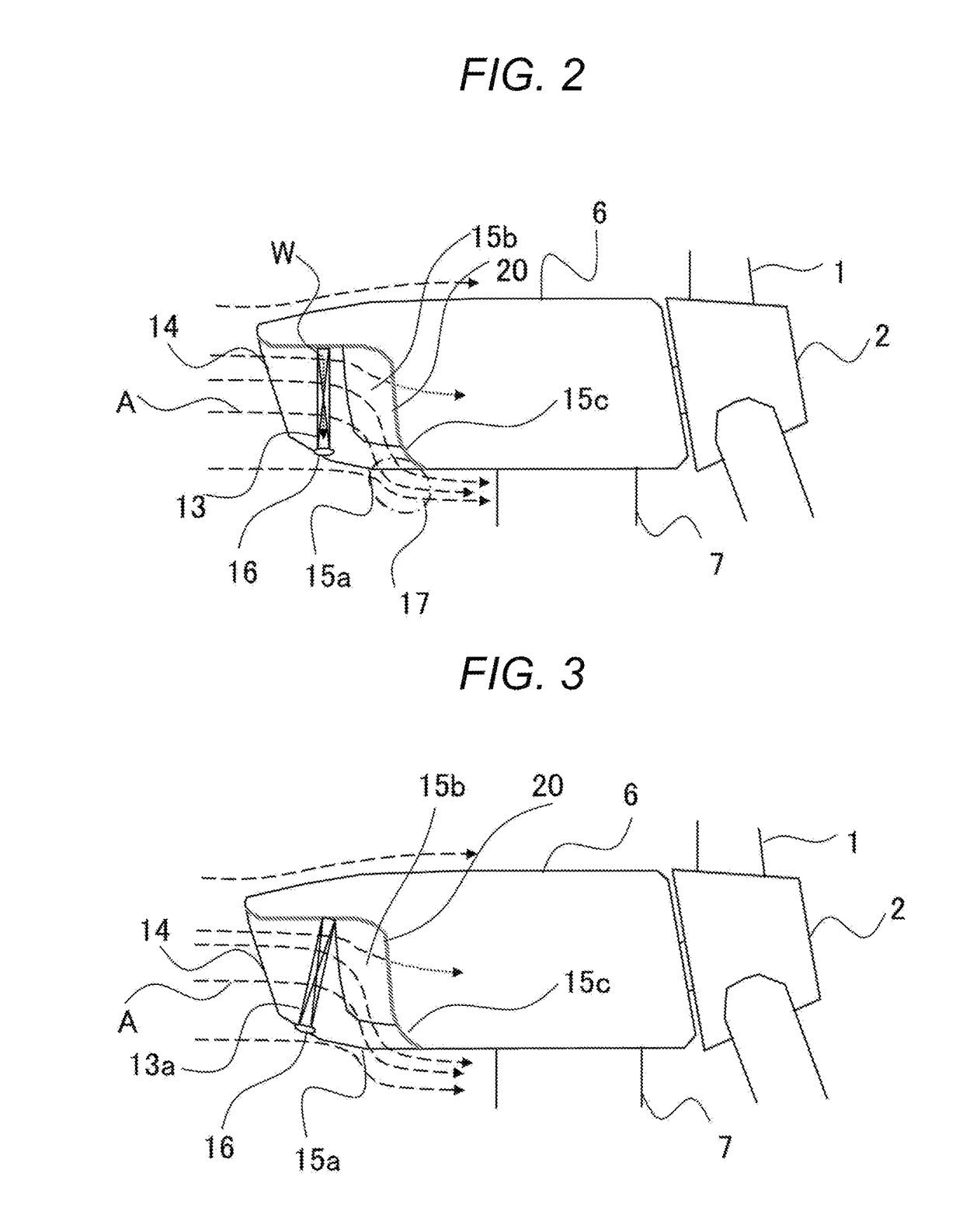Wind power generation system
a power generation system and wind turbine technology, applied in the direction of wind motors, wind motor combinations, motors, etc., can solve problems such as loss of devices, and achieve the effect of facilitating maintaining an air quantity
- Summary
- Abstract
- Description
- Claims
- Application Information
AI Technical Summary
Benefits of technology
Problems solved by technology
Method used
Image
Examples
first embodiment
[0018]A first embodiment will now be described with reference to FIGS. 1 and 2.
[0019]FIG. 1 is a schematic view of a wind power generation system for offshore installation according to the first embodiment. The wind power generation system includes a tower 7, which is installed offshore to protrude from underwater, and a nacelle 6, which is located at the top of the tower 7. The nacelle 6 supports pivotally a rotor 2 provided with blades 1 and a hub (not shown). The rotor 2 is connected through a main shaft 3 and a gearbox 4 to a generator 5. The generator 5 is connected through a power cable (not shown) to electrical items, such as a power converter 8 and a transformer 9, housed in a lower portion of the tower 7. The wind power generation system uses a coolant, which contains antifreeze, as a cooling medium to cool the generator 5 and the gearbox 4. The wind power generation system includes a radiator 13 into which the coolant is introduced. The radiator 13 is supported on an exter...
second embodiment
[0041]A second embodiment of the invention will now be described with reference to FIG. 3. Similar descriptions to the first embodiment will be omitted. FIG. 3 is a schematic side view of a nacelle 6 of a wind power generation system according to this embodiment. Note that FIG. 3 includes a sectional side view of a radiator 13a and its surroundings to describe an arrangement of the radiator 13a. The radiator 13a is inclined with its intake surface facing upward.
[0042]While an upright position of the radiator to face upwind is desirable to receive natural wind effectively, a maximized size of the radiator is suitable to ensure cooling capability. In this embodiment, a primary air outlet 15a is provided in the bottom of the nacelle 6. Thus, by inclining the radiator 13a in a manner such that the direction perpendicular to the intake surface of the radiator 13a is slightly raised from the horizontal direction at the upwind side, fins of the radiator 13a, thus tilted downward, acts as g...
third embodiment
[0043]A third embodiment of the invention will now be described with reference to FIG. 4. Similar descriptions to the embodiments described above will be omitted. FIG. 4 is a schematic horizontal plan view observed from downward of a nacelle 6 of a wind power generation system according to this embodiment. FIG. 4 includes a horizontal section of a radiator 13b and its surroundings to describe an arrangement of the radiator 13b.
[0044]In this embodiment, primary air outlets 15b are located in both flanks of the nacelle 6. In the second embodiment described above, the radiator 13a is inclined with its intake surface facing upward. In this embodiment, two radiators are arranged next to each other in the flank direction of the nacelle, with adjoining portions of the two radiators inclined toward blades of the nacelle, in other words, toward the downstream side. In other words, the radiators 13b are inclined so that the adjoining portions of the two radiators 13b are located further down...
PUM
 Login to View More
Login to View More Abstract
Description
Claims
Application Information
 Login to View More
Login to View More - R&D
- Intellectual Property
- Life Sciences
- Materials
- Tech Scout
- Unparalleled Data Quality
- Higher Quality Content
- 60% Fewer Hallucinations
Browse by: Latest US Patents, China's latest patents, Technical Efficacy Thesaurus, Application Domain, Technology Topic, Popular Technical Reports.
© 2025 PatSnap. All rights reserved.Legal|Privacy policy|Modern Slavery Act Transparency Statement|Sitemap|About US| Contact US: help@patsnap.com



